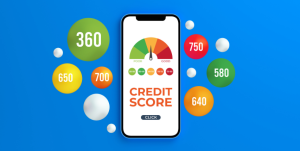Student Loan Breakdown
15 May 2023

Embarking on the journey of higher education is an exciting and transformative experience, but it often comes with a financial burden. For many students, the path to a college degree involves navigating the complex world of student loans and financial aid.
Understanding Student Loans
Student loans are financial instruments designed to help students cover the costs of tuition, fees, and living expenses while pursuing higher education. There are two main types of student loans: federal and private.
Federal Student Loans
Federal Direct loans, provided by the U.S. Department of Education, come in two main categories: subsidized and unsubsidized. These loans offer fixed interest rates, providing predictability for borrowers, and typically come with various repayment plans, including income-driven options, making them a flexible and accessible option for students seeking financial assistance for their educational pursuits.
Subsidized Loans: These loans are need-based, and the government covers the interest while the borrower is in school.
Unsubsidized Loans: Available to both undergraduate and graduate students, these loans accrue interest from the moment they are disbursed.
PLUS Loans: These loans are for parents of dependent undergraduate students or graduate students themselves. They require a credit check.
Private Student Loans
Private student loans are financial instruments offered by private lenders, such as banks and financial institutions, to assist students in covering their educational expenses. Unlike federal loans, private student loans are not backed by the government and typically have variable interest rates. The interest rates and terms depend on the borrower’s creditworthiness, which means that individuals with a strong credit history may secure more favorable terms. Private loans may have shorter repayment periods compared to federal options and often lack the flexible repayment plans offered by federal programs. Additionally, private student loans generally do not offer the same borrower protections and forgiveness programs as federal loans, making it essential for students to carefully consider their financial situation and explore all available options before opting for a private loan.
Other Financial Aid
Student loans aren’t the only options available. Grants and scholarships are noteworthy options, often awarded based on academic achievement, merit, or financial need. Unlike loans, these do not require repayment, alleviating the financial burden on students. Opportunities are available outside of your intended institution as well. Many private and public business will offer their own scholarships, some of which present you with much smaller competition than the college’s own scholarships.
Work-study programs provide opportunities for part-time employment, allowing students to earn money while gaining valuable work experience. Opportunities vary by institution.
There are plenty of online resources looking to help start your search for scholarships, large and obscure. The College Board can automatically match you with scholarships that match your profile information, and you probably already have an account if you’ve taken the SAT or AP tests. Other websites like Fastweb and Scholarships.com can help you find those niche scholarships in your area.
Applying for Aid
The Free Application for Federal Student Aid (FAFSA) serves as a gateway to federal and state financial aid programs, helping determine eligibility for grants, loans, and work-study opportunities. Many schools will also require the FAFSA for scholarship eligibility. After filling out the FAFSA, you’ll choose 10 schools to receive your application. Check if those schools require any additional aid applications – some colleges ask you to fill out a CSS Profile or internal aid applications as well.
How you receive your financial aid depends on the type of aid provided. Loans will usually be made in disbursements directly to the school and applied to your account. Scholarship work similarly unless specified for particular uses. Work Study will require you to find an eligible job, then the money will be used to subsidize your paychecks until the amount has been fully utilized. An important note: you will receive paychecks based on your hours like any other student; work study incentivizes employers to hire you because of the reduced cost they have to directly pay.
Understanding Your Loan
It’s essential to be familiar with the terms of your financial aid, including:
- What you are borrowing
- What you will need to repay, and when
- Who the loan servicer is (also called the loan holder)
- Who the loan guarantor is, if there is one
You’re likely not taking just one loan to cover all four years – generally, you’ll need to fill out a FAFSA every year. The amounts might change since the cost of attendance is likely to change, as is the interest rate. And the aid your school offers you can change too.
If you are confused or find yourself in trouble, ask for help. Make an appointment with the Financial Aid office at your school. You can also go to the National Student Loan Data System (NSLDS) website and set up an account or call the Federal Student Aid Information Center at 800-4-FED-AID.
Student Loan Terms
Cost of Attendance (COA): this represents the average cost of attendance, factoring in both direct costs, such as tuition and fees, and indirect costs, such as books and supplies.
Deferment: This temporarily suspends your repayments on federal student loans. On certain types of direct loans, interest will not accumulate during this time. Qualifying reasons may include unemployment, economic hardship, active or post-active military duty, or returning to school at least half-time. Outside of school and qualifying military duty, payments can be deferred for a total of three years.
Default: You are considered in default if you have been delinquent on your loan payments for nine months. At this point, the full loan balance is due.
Delinquency: You are considered delinquent if you fail to make a payment on your loan by the due date.
Forbearance: This lets you postpone payment of your federal student loans, reduce payment amounts, or extend the repayment period. Interest does continue to accumulate during this time. Forbearance is granted for 12 months and may be extended every 12 months up to three years.
Grace Period: With federal student loans, you have six months between the time you graduate or fall below part-time status and the time your first loan payment is due.
Interest: This is the amount that you pay based on a percentage of your principal as the cost of borrowing. These rates may vary from loan-to-loan.
Mastery Promissory Note: This is a legal agreement between you and your lender that explains your rights and responsibilities, how interest is calculated and how you repay. By agreeing to these terms, the MPN will cover new direct federal loans for 10 years.
Principal: The principal is the original amount you borrowed, not including any accumulated interest
Servicer: Your servicer is who handles your loan payments. You’ll be assigned to a servicer for your federal loans, and this servicer may change over the course of your loans. Not sure who your servicer is? Studentaid.gov maintains a page to help you find them.
See Related Posts
popular articles
Categories
2
Today’s update
New Posts
blog read










